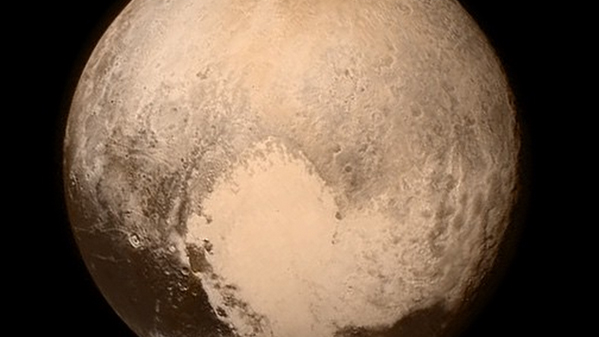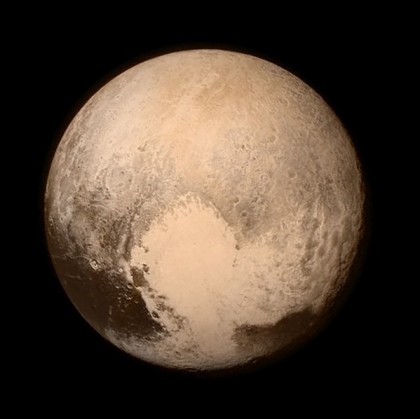After a nine-year journey, we've finally reached Pluto
And it's magnificent

We've finally made it to Pluto.
By NASA's calculations, the New Horizons spacecraft, launched over nine years ago, made its closest approach to the dwarf planet at 6:49am CDT on Tuesday.
To reach its destination, the spacecraft journeyed 3 billion miles over the course of nine and a half years, having launched in 2006.
New Horizons came within 7,800 miles of Pluto at closest approach, and will now be taking photos of the planet - though we won't see them for another few hours.
Cold as ice
The New Horizons vessel, no bigger than a baby grand piano, has torpedoed its way towards the icy planet at a speed of over 30,000 mph.
Right now it's taking detailed pictures of Pluto's surface, which we'll see in just a few hours time. For now, we have one new picture that was sent back in the last few hours (seen below).
This also marks the end of an era for space exploration, as the United States becomes the first nation to visit every planet in our solar system.
Sign up for breaking news, reviews, opinion, top tech deals, and more.
There'll be plenty to learn from Pluto - possibly some revelations about the early solar system - and it will take a year or so for all the information to be sent back to Earth.
Until we get more pictures, here's our best look at Pluto yet.

Update July 14, 1:18 pm PDT: NASA has released another picture of Pluto alongside its largest moon, Charon. The image is in false color to show the different terrain and surface material of Pluto and Charon, and doesn't actually represent the colors of either.
"We make these color images to highlight the variety of surface environments present in the Pluto system," said Dennis Reuter, co-investigator with the New Horizons Composition Team, in a NASA post. Another co-investigator said Pluto and Charon in color show that the bodies "are truly complex worlds."
The New Horizons spacecraft's Ralph instrument captured the image and used three color filters to obtain the hues, which are exaggerated to make it easier to see the bodies' geographical diversity. Pluto and Charon were also moved closer together in the picture so they could be seen together - they're not actually this close to one another.

You can read more about the new false-color image and New Horizons mission on NASA's website.

Hugh Langley is the ex-News Editor of TechRadar. He had written for many magazines and websites including Business Insider, The Telegraph, IGN, Gizmodo, Entrepreneur Magazine, WIRED (UK), TrustedReviews, Business Insider Australia, Business Insider India, Business Insider Singapore, Wareable, The Ambient and more.
Hugh is now a correspondent at Business Insider covering Google and Alphabet, and has the unfortunate distinction of accidentally linking the TechRadar homepage to a rival publication.